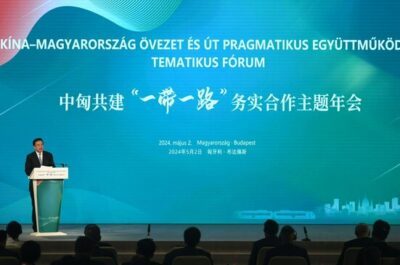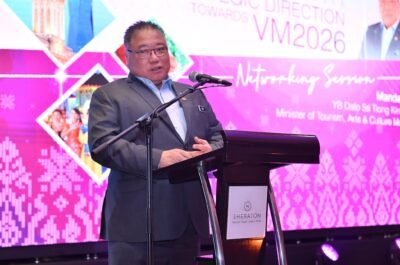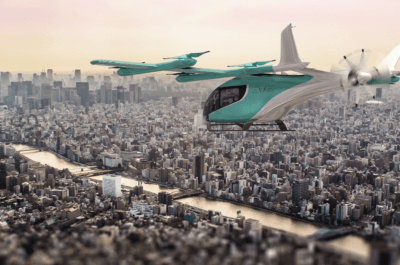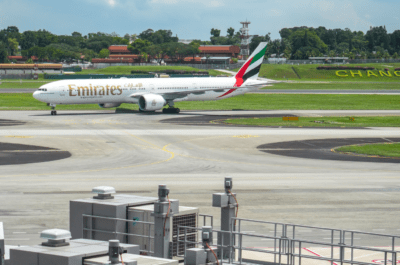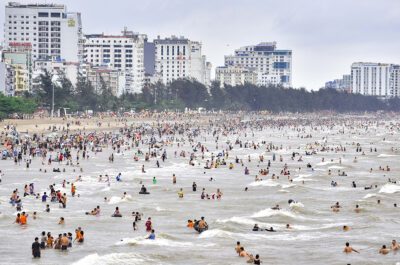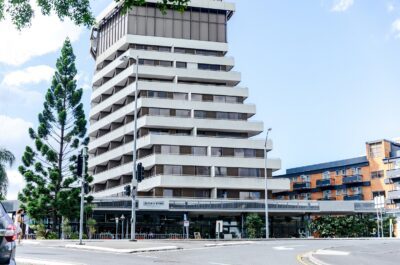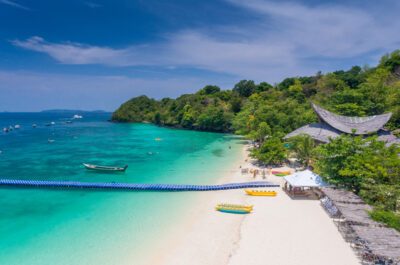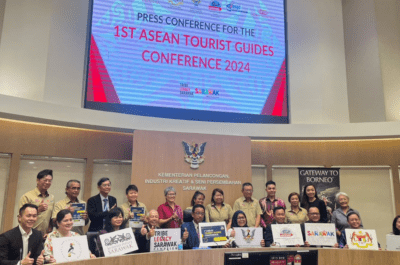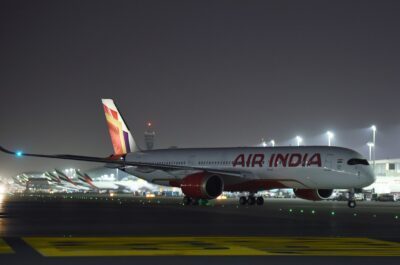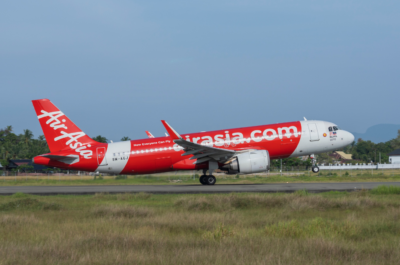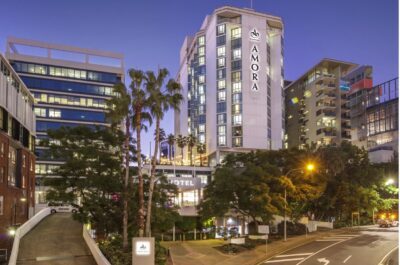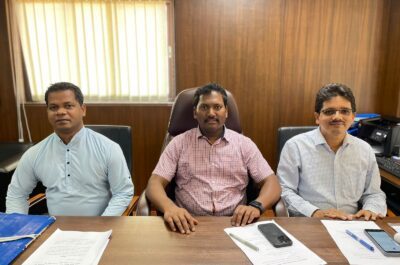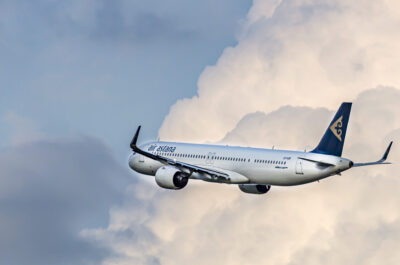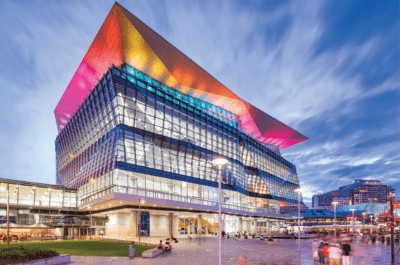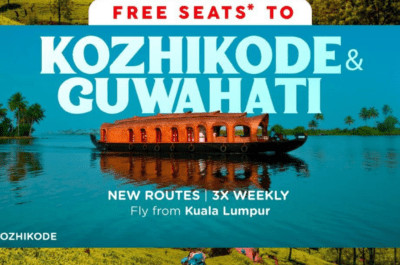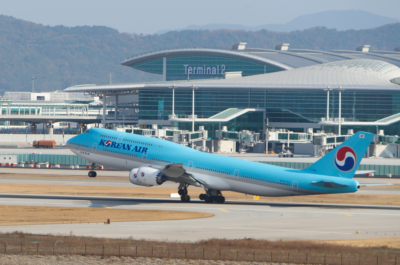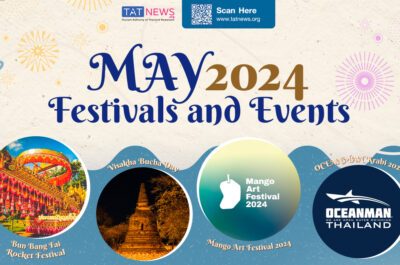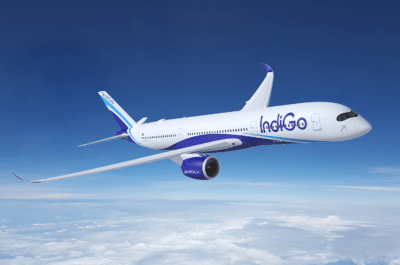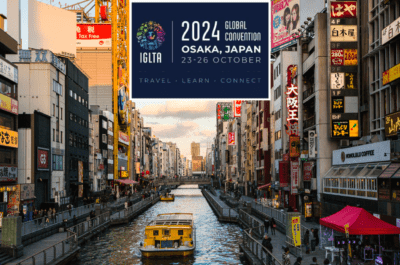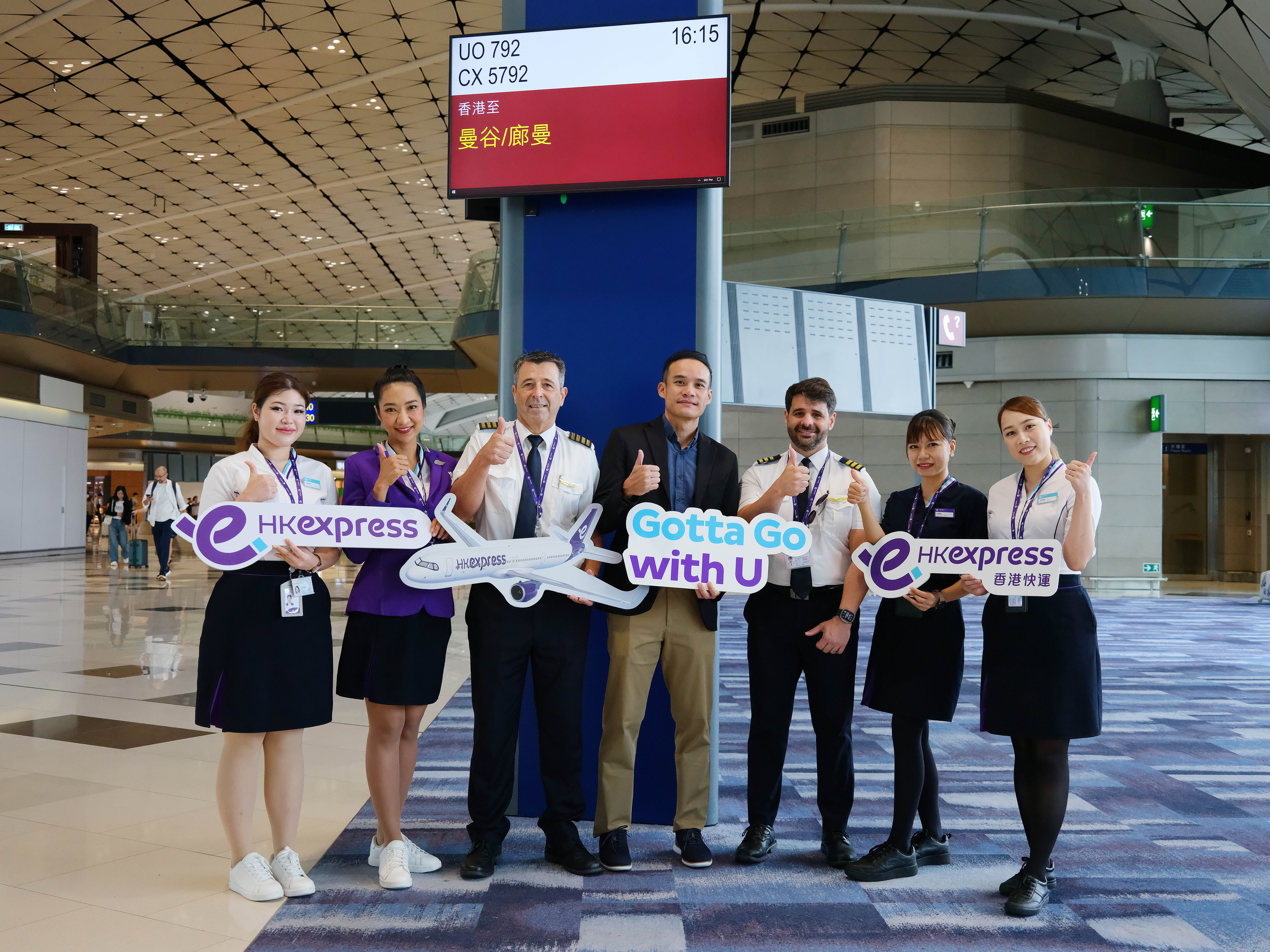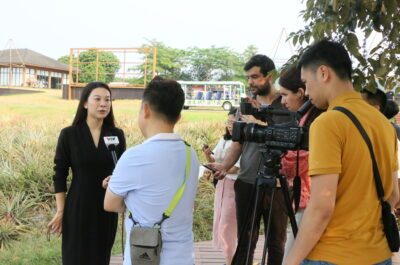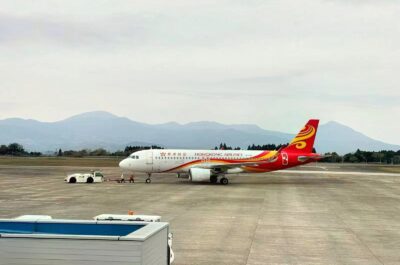…
As tourism flows to Asia Pacific continue to rise, are ASEAN countries set to reap the rewards?
A study commissioned by the World Bank to facilitate the integration of the ASEAN travel and tourism industry into the broader economy has come up with a detailed analysis of the strengths, weaknesses, opportunities and threats (SWOT) of the status quo.
This is the first study of its kind since ASEAN tourism has only been seriously promoted for the past two decades. Thus, its findings have tremendous relevance to other regional and sub-regional groupings as they embark upon similar initiatives.
ASEAN’s objective is to strengthen the interdependence of its member economies and encourage its members to adopt “Prosper Thy Neighbour” policies. Over the years, ASEAN heads of state have passed a number of resolutions and statements affirming this direction, e.g. the ASEAN Vision 2020, the Vientiane Action Programme (VAP) 2004–2010 following both the Hanoi Plan of Action (HPA) 1999–2004, the Initiative for ASEAN Integration (IAI) and the Roadmap for the Integration of ASEAN (RIA).
Eleven priority sectors of integration have been identified and included in the ASEAN Framework
Agreement for the Integration of Priority Sectors, signed in Vientiane in November 2004, along with the VAP.
Each of these priority sectors is developing a roadmap for economic integration, with detailed and specific measures to be implemented from 2005 to 2010, with active involvement from the private sector.
These priority sectors are (1) agro-based products; (2) air travel; (3) automotives; (4) e-ASEAN; (5)electronics; (6) fisheries; (7) healthcare; (8) rubber-based products; (9) textiles and apparels; (10) tourism;
and (11) wood-based products.
Tourism has a strategic role to play in ASEAN economic growth as well as in enhancing the rich and diverse heritage of the region. The ASEAN leaders at the Eighth ASEAN Summit in 2002 signed the ASEAN Tourism Agreement for ASEAN Co-operation in Tourism. This agreement covers various areas, including the facilitation of tourism investment within the region.
International visitor arrivals to ASEAN countries totalled more than 50.8 million by the end of 2005, reflecting an increase of more than 4.8 percent since 20041 (see Table 1). The region has remained resilient in attracting improved international arrivals, and ministers from ASEAN member countries have expressed
the importance of the industry working together toward a common goal.
There is a general view, however, that barring some of the internal and external shocks that have affected visitor arrivals, much more can be done to boost visitor arrivals to, within, and from ASEAN.
As a result, the World Bank commissioned a Japan-based consultant to conduct a SWOT analysis of the ASEAN region, particularly in the contexts of promoting an integrated single destination, increasing intra-ASEAN travel and developing world-class products.
The findings are as follows, with some slight editing for clarity and with additional information provided by the PATA Strategic Intelligence Centre.
STRENGTHS
- Well-established tourism in member countries: Singapore, Malaysia, and Thailand already have high annual visitor arrivals.
- Political awareness: The importance of tourism is well recognised among many ASEAN countries, as highlighted through ministerial ASEAN meetings and summits.
- A full-time ASEAN Secretariat already exists to coordinate cooperation and integration efforts.
- Safety: ASEAN member countries have traditionally been considered safe and visitor-friendly.
- Well-developed business sectors: e.g. Singapore, Malaysia, Thailand and Indonesia are also being joined by emerging economies, such as Vietnam, Lao PDR and Cambodia.
- Well-developed entertainment options: Countries already offer shopping, nightlife activities, etc.
- Well-developed linkages to external markets are in place.
- Greater Mekong Subregion (GMS) alliance: ASEAN integration should lead to synergistic effects.
- Access: e.g. GMS countries may not necessarily require air travel.
- Member countries have unique destination images.
- World-class airports facilitate travel: e.g. Singapore Changi and Kuala Lumpur International Airport, as well as the region’s newest airport, Suvarnabhumi International Airport in Bangkok, set to open later in the year.
- Diverse tourism resources within the region range from nature to culture, religion, sports, and health and wellness.
- Seasonality patterns are similar for all ASEAN member countries, which is conducive to multi-country tour patterns.
- Some member countries have widespread English language capability.
- Well-developed intra-ASEAN tourism already exists. Short-distance travel potential is well suited to the regional population’s income.
WEAKNESSES
- Countries are at different levels of inbound and outbound market maturity.
- Countries are at different levels of manpower standards.
- Possible competing strategies are in play: e.g. more than one country aspiring to be a strategic hub, or countries competing to be world leaders in particular attractions.
- Poor infrastructure in some countries.
- Progress may be slow due to extra levels of policy-making, i.e. ministries of tourism/commerce and ASEAN, which may also conflict.
- Most existing collaborative networks among countries are weak.
- Infrastructure improvements tend to fall outside of ASEAN initiatives.
- Under-developed market intelligence remains unresolved.
- Poor information and communications technologies (ICT) persist in some countries. Some member countries still focus on visitor arrival numbers, with less attention to tourism yields and dispersion.
- There is inactive collaboration with national flag carriers and discrepancies exist.
- Marketing campaigns are not integrated and lack a consistent message in building tourist destination images.
- Trade and investment need to be considered, as well as inter-firm linkages.
- Visas are required for travellers from outside the region.
- Some source markets are niche-oriented and do not align well with a multi-destination approach.
- Preference given to visit one country: A recent survey suggests that the majority of visitors to the GMS visit only one country at a time. Only around 30 percent of tourists visit at least two countries, and 80 percent of visitors to Thailand visited only that country.
- National priorities in marketing often override regional objectives.
- Time-consuming transit delays occur between countries.
- The ASEAN name is not well-known in long-haul markets.
- Each country conveys a similar image as a tourist destination; e.g. they have similar tourism resources, such as beaches, rainforests and cultural assets.
- Some countries do not have offshore tourism marketing offices.
- Evidence of poverty in some countries is generally unattractive to international tourists.
- Market characteristics of some external countries are not well-known, e.g. China (PRC) and India.
- Not all member countries are attractive to neighbouring tourism.
OPPORTUNITIES
- Proximity to large and growing Asian markets, such as China (PRC) and India, and high-expenditure markets, such as the Middle East, Japan, Chinese Taipei and Korea (ROK), could be beneficial.
- Mekong tourism development initiatives could have benefits to ASEAN, e.g. infrastructure improvements.
- ASEAN packages could have more variety, such as city, ecotourism, etc.
- Liberalisation: Ease of visa requirements and government regulation of airlines could be helpful.
- Business tourism: ASEAN member countries have close economic relationships with non-ASEAN countries, e.g. India, Japan, China (PRC) and Australia.
- Develop the meetings, incentives, conventions and exhibitions (MICE) market.
- Special interest tours: Vietnam, for example, is promoting flower tourism in Japan.
- The ASEAN region is suited to hub travel trends.
- World-class events could be leveraged.
- Two-way tourism could be better promoted.
- Intra-regional travel could be increased for leisure, business, study and MICE.
- Visiting friends and relatives (VFR) tourism: Economic migration within ASEAN countries activates VFR tourism.
THREATS
- Unstable political conditions in some countries impact tourism development.
- Regional crises, e.g. terrorism, avian flu and tsunami, discourage tourism.
- Contagious disease and its media coverage may affect international travel demand.
- Lack of crisis management readiness persists in some countries: Risk management contributes to a positive revival of tourist destinations in many cases.
- Safety and security are not consistent; conversely, unnecessarily negative travel advisories are also troublesome.
- Currency fluctuation continues to be a risk.
- Ongoing ethnic and religious conflicts are potentially problematic.
- National tourism organisations (NTOs) lack the resources to manage cooperation agreements.
- NTOs lack ownership in plans which have donor assistance.
- Proliferation of high-level political objectives without frontline implementation indicates a lack of stakeholder-driven strategies.
- ASEAN campaigns have not always been highly successful, e.g. ASEAN hotel and tour ‘passes’.
- Full integration is threatened by less-mature countries having weaker voices.
- Economic and development gaps divide developed countries and least-developed countries in the region.
- The ASEAN campaign is dependent on contributions from NTOs, which tend to be low.
- Other regional strategies: e.g. the GMS initiative, which also promotes a single destination, and though synergy may be gained, there may be conflicting strategies or exhaustion of resources from individual member countries.
VISA LIBERALISATION
It is generally recognised that the ASEAN region is its own best source market. A key requirement for economic integration is ease of travel among ASEAN countries, similar to that within the European Union. Hence, the ASEAN Framework Agreement on Visa Exemption which was signed in Kuala Lumpur on July 25, 2006.
This is in line with the ASEAN Tourism Agreement, signed on November 4, 2002 in Cambodia on the facilitation of intra-ASEAN travel, and the ASEAN Framework Agreement for Integration of Priority Sectors, signed on November 29, 2004, which commits ASEAN member countries to providing visa exemption for intra-ASEAN travel by ASEAN nationals.
The ASEAN Framework Agreement on Visa Exemption lays out a set of general principles and guidelines toward establishing and/or renewing bilateral agreements among member countries on visa exemption for their respective citizens travelling within the ASEAN region.
At the same time, the wording of the agreement includes a number of ‘escape clauses,’ which indicate that it could be some time before the agreement becomes universally applicable.
For example, Article 1 states: “Member Countries, where applicable, shall exempt citizens of any other Member Countries holding valid national passports from visa requirement for a period of stay of up to 14 days from the date of entry, provided that such stay shall not be used for purposes other than visit.” The key words here are “where applicable”. They are repeated n Article 7, which says “Member Countries, where applicable, shall negotiate and conclude separate bilateral protocols to implement this Agreement as soon as possible. The implementation of such bilateral protocols shall come into force on the date as mutually agreed by the respective Member Countries.”
In essence, the agreement leaves it up to the individual governments to negotiate the visa waivers bilaterally. However, that is clearly necessary given the disparity in economic development between the various countries and the need to avoid potential problems regarding illegal migration from developing to developed countries.
There is now movement toward the proposed development of an ASEAN Business Travel Card and the introduction of a special ASEAN Tourism Professional (ATP) permit, which would facilitate the temporary movement of tourism professionals.
This would allow shorter time-frames for granting visas for temporary movement, accomplished through electronic means, transparent application processes, simplified renewal and transfer procedures, and recourse mechanisms to ascertain the status of an application and reasons for rejection.
STRATEGY TO ACCELERATE THE INTEGRATION OF TOURISM SERVICES AND AIR TRAVEL IN ASEAN
A strategy paper produced by the ASEAN Secretariat notes that in addition to visa regulations, tourism is highly dependent on other factors, such as financial services, health services, and air, maritime and road transport.
The 37th ASEAN Economic Ministers’ Meeting (AEM) in Vientiane in September 2005 agreed that the “integration of tourism and air travel can be done at an even faster pace”. The Ministers further agreed “to identify additional measures to accelerate integration in these two services sectors,” and instructed relevant officials to work toward the formulation of these measures.
Liberalisation of the airline industry in ASEAN is well under way to improve quality of service, lower air fares, and make airlines more competitive. (Note: the strategy paper was crafted before oil prices hit US$75 a barrel.)
To fast-track the integration of the air travel sector, the ASEAN Transport Ministers’ Meeting, held on November 17, 2005 in Vientiane, tasked the Senior Transport Officials Meeting to consider Singapore’s proposals to further improve the content and timelines on the Measures for Passenger Air Services Liberalization under the Roadmap for Integration of the Air Travel Sector. Singapore’s proposals included the following main suggestions:
- Accelerating the timeline for Unlimited (or No Limitations on) 3rd and 4th Freedom Traffic Rights for scheduled passenger services between all ASEAN capital cities to December 2006, from the original December 2008 timetable;
- Expanding coverage to all ASEAN cities for Unlimited (or No Limitations on) 3rd and 4th Freedom Traffic Rights for scheduled passenger services by December 2008, instead of only for ASEAN capital cities;
- Expanding coverage to all ASEAN cities for Unlimited (or No Limitations on) 5th Freedom Traffic Rights for passenger services by December 2010, instead of only between ASEAN capital cities.
Additionally, the proposals called for:
- Development of an ASEAN Multilateral Agreement on Air Services, for conclusion in due time;
- Development of a conceptual framework for the establishment of a Single Aviation Market in ASEAN.
THE FREEDOMS OF THE AIR
First Freedom: To fly over another country’s airspace
First Freedom over-flight rights have historically been the least controversial because they do not pose any competitive threats to national carriers of the countries concerned. However, due to strategic military concerns, these over-flight privileges have not been easy to secure in some rare cases. Airlines typically pay for the rights to over-fly another country. For example, the U.S. charges foreign airlines US$35 per 100 nautical miles that they operate through its air space.
Second Freedom: To make a technical stopover in one country en route to another
Like First Freedom rights, Second Freedom rights do not pose any commercial threat to national airlines. In fact, these rights generate revenue for the stopover country through fuelling and handling services provided by the airports involved. A good example of a Second Freedom stopover is Anchorage in the US, where many airlines flying between Asia and North America make refuelling stops, without picking up or discharging passengers.
Third Freedom: To carry traffic to a second country. Fourth Freedom: To carry traffic back from a second country
Taken together, the Third and Fourth Freedom rights are what constitute a round-trip journey from one country to another. These rights are typically granted on a reciprocal basis by the two countries concerned. For example, Thailand and Singapore might agree to grant one another’s airlines a total of six frequencies per day between the two countries, with a right to pick up and discharge passengers at points of origination and destination.
Fifth Freedom: To carry traffic between a second and third country
Of the different freedoms, Fifth Freedom rights are historically the most politically contentious as they involve at least three governments rather than the usual two. For example, for Thai Airways to fly a route from Singapore to Indonesia, Thailand would need Fifth Freedom rights from both Singapore and Indonesia.
Use of Fifth Freedom rights by an airline of a third country is often seen as encroaching upon the “home market” traffic of the two countries that have granted the rights; thus, some governments seek to restrict the percentage or number of seats that an airline can sell on a Fifth Freedom sector.
Sixth Freedom: To carry traffic through one’s home country to a third country
Because Sixth Freedom traffic neither originates nor terminates in the home market of the airline concerned, some governments contend that this traffic is actually a special category of Fifth Freedom traffic and should be subject to them same restrictions. Airlines that are in the best position to exploit Sixth Freedom rights are those that have their hubs in geographically advantageous places, such as between major source markets and destinations.
Seventh Freedom: To carry round-trip traffic between a second and third country, without connecting through the home country
Within most areas of the world, the granting and exercising of these rights is very rare. This distinguishes them from Fifth Freedom rights whereby the airline’s route – but not the traffic – both originates and terminates outside the home market. However, Seventh Freedom flights are quite common within the European Union(EU). Finnair (Finland), for example, operates a stand-alone route between Copenhagen (Denmark) and Oslo (Norway). Outside of Europe, however, Seventh Freedom routes are quite rare.
Eighth Freedom: To carry domestic traffic within a second Country
Like Seventh Freedom Rights, Eighth Freedom rights are also extremely rare outside of the EU and are typically reserved for only the national carriers of the country concerned. However, many airlines are currently seeking these rights in exchange for more liberal Fifth Freedom rights.
Source: PATA 2001.” Understanding the Freedoms of the Air: A Framework for Airline Capacity Regulation.”
Land and sea transport are also being looked at in a similar light. In terms of tourism-related land transport, ASEAN is seeking technical support from Japan to implement the agreed plans from the Vientiane Action Programme (VAP), namely, “the harmonisation of road signage for the ASEAN Highway, to include the requirements for tourism purposes and road safety.” However, it is likely that this will be a resource-consuming process.
Meanwhile, for tourism-related sea transport, ASEAN will endeavour to identify new cruise tourism corridors/areas, enhance cruise promotional activities, and improve cruise port and shipping infrastructure, including security.
Other identified areas for promoting the integration of tourism into ASEAN economies include:
- Tourism investment: ASEAN member countries need to identify any investment gaps and impediments, as well as develop strategies to assist the tourism industry and attract further investment.
- Liberalisation of the tourism sector: The ASEAN strategy paper suggests that member countries may consider increasing the foreign equity participation for the tourism sector to 49 percent by 2006, 51 percent by 2008, and 100 percent by 2010. At the same time, they should ensure that liberalisation creates fair conditions of competition for growth of all member countries’ tourism services and effective safety nets for Cambodia, Lao PDR, Myanmar and Vietnam (CLMV countries).
- ASEAN tourism promotion and marketing: In today‘s crowded marketplace, building and maintaining brand value is the key to destination and business success. The strategy paper says that while a clever advertising theme or an ingenious marketing plan is important, member countries should also consider the creation of an ASEAN brand identity, encompassing total destination management.
- To succeed, ASEAN needs to clearly differentiate themselves from competitors, consistently deliver on their promises, and simplify choices for customers in order to deliver a memorable and enriching brand experience at every critical point of contact with ASEAN destinations.
- Tourism standards: ASEAN tourism standards for a wide range of tourism sub-sectors (e.g. hotels, restaurants, tour operators, guides and transportation services) are currently being planned for development by 2010. At that time, ASEAN would be positioned as a quality destination with enhanced service quality, and would have the ability to create a positive image and promote the competitive advantage for ASEAN tourism on the world market.
- Human resource management: A proposed strategic plan for the preparation and implementation of mutual recognition arrangement (MRA) should be underway by mid 2006, following the scheduled completion of the ASEAN Minimum Common Competency Standards for Tourism Professionals (ACCSTP) framework, which covers 33 job titles in the hotel and travel services industry.
The ASEAN MRA for Tourism Professionals should be introduced by 2007 instead of 2008. To support the ACCSTP and the establishment of a Regional Qualification Framework and the Recognition System, a common tourism course curriculum for ASEAN member countries should be identified and introduced.
CONCLUSION
Due to the collapse of the World Trade Organization talks, regional and sub-regional co-operation is expected to become a hot topic for discussion. The roadmap being charted by ASEAN countries has considerable relevance to other regions across the Asia Pacific region, especially throughout South Asia and Northeast Asia. Over time, these regions and sub-regions will move toward closer integration, yielding tremendous benefits for all.
The Member Countries of the Association of Southeast Asian Nations (ASEAN) are Brunei Darussalam, Cambodia, Indonesia, Lao PDR, Malaysia, Myanmar, Philippines, Singapore, Thailand and Vietnam.
TravelDailyNews Asia-Pacific editorial team has an experience of over 35 years in B2B travel journalism as well as in tourism & hospitality marketing and communications.
